
Key Points
- S&P 500 Is Below Resistance but Can’t Get Oversold
- Small Caps Weaken Further, Continue to Lag
- The 10-Year Note Finds Support at the 2018 Lows
- Commodities Are Stalling, Bulls Must Defend Key Support
- Sentiment Reaches Extreme Fear Levels
Mid-Week Market Update – United States
The S&P 500 remains below resistance and the declining 50 and 100-day moving averages. The index has been making lower highs and lower lows since peaking in January, the definition of a downtrend. The bears retain control of the trend until 4,200 can be recaptured.
The 14-day RSI has yet to become oversold during the most recent round of selling pressure and has left a small bullish divergence in place. While we remain open to the idea of a near-term bounce, we note that it would likely be countertrend in nature.
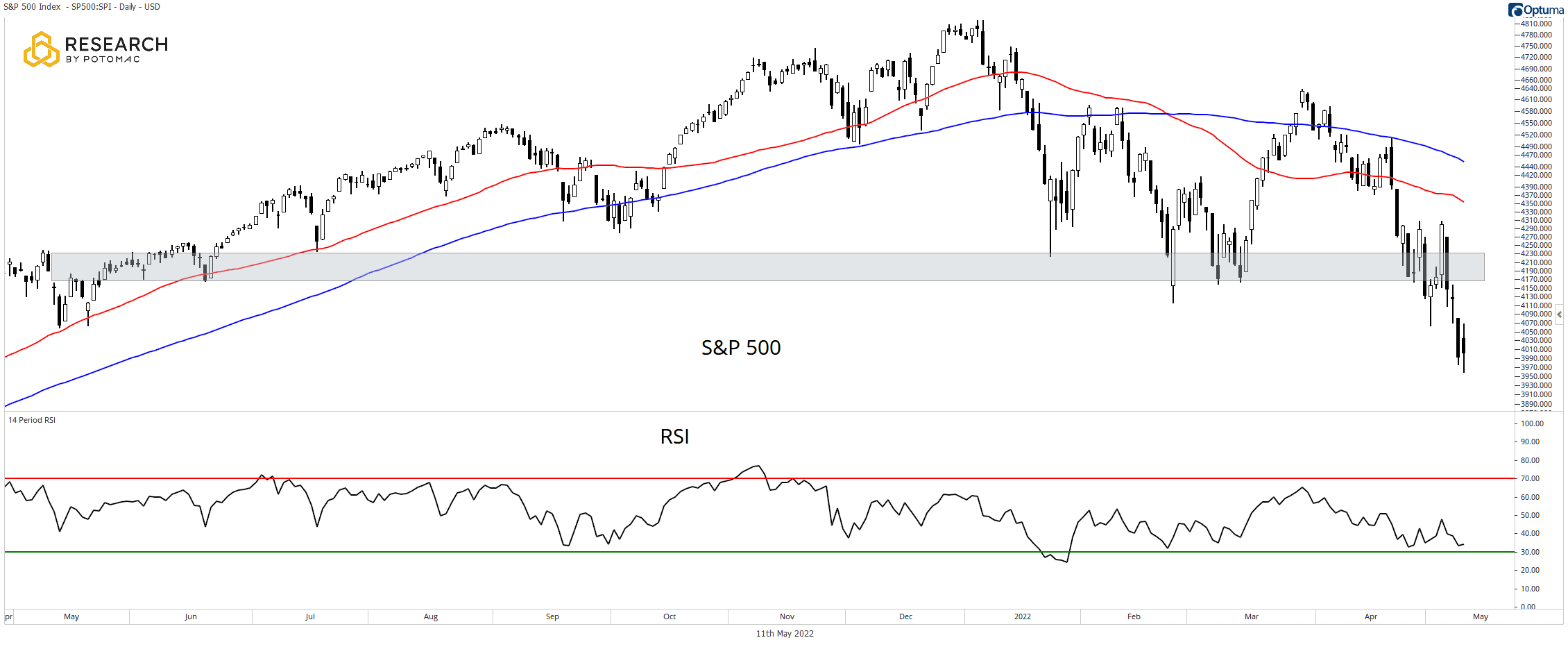
The S&P Small Cap 600 Index remains below support at 1,260 as it trades below the declining 50 and 100-day moving averages. The bears are in control of the trend, following a series of lower highs since the November peak. The 14-day RSI is near oversold levels but also has not broken below 30.
The relative trend is bearish, below the 50-day moving average, and below price-based resistance.
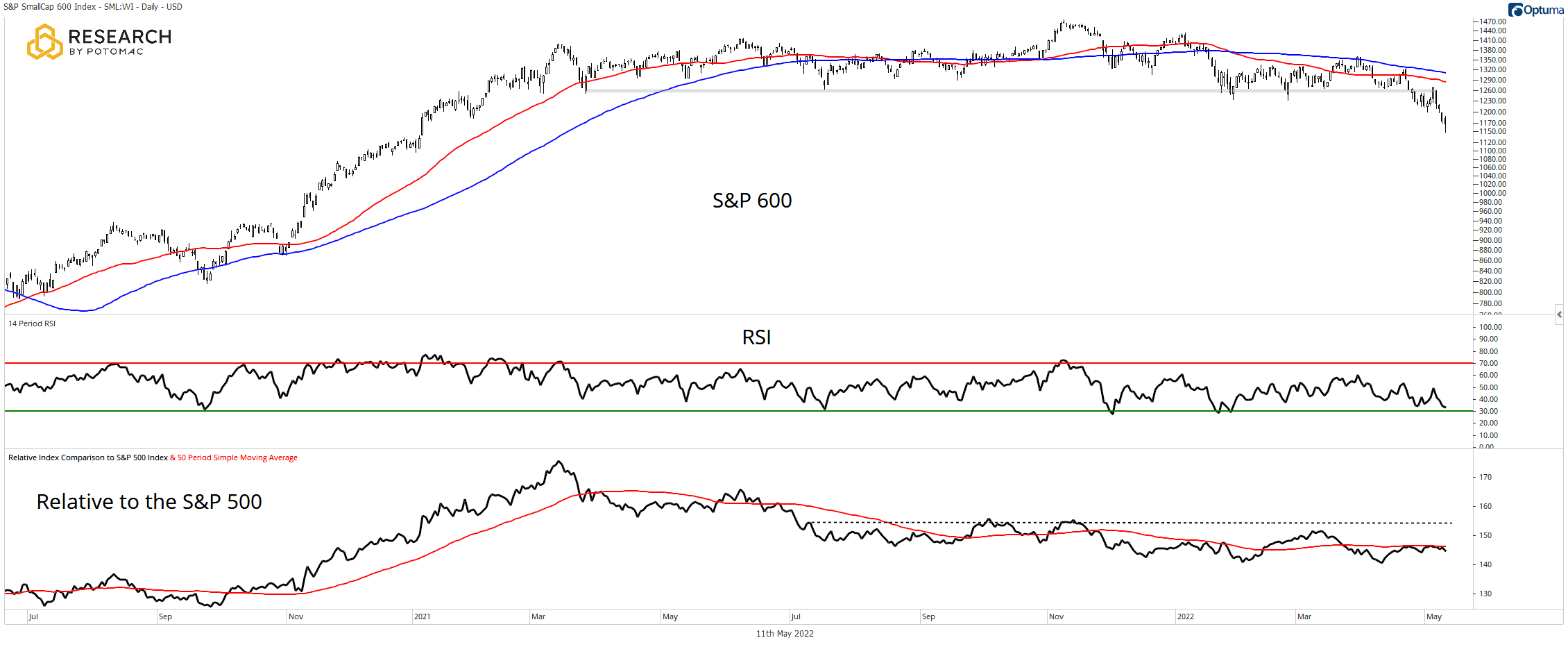
The NASDAQ 100 has broken support at 13,000 below the declining 50 and 100-day moving averages. The 14-day RSI remains in a bearish regime but has not become oversold during the recent price weakness. Here, too, we can’t rule out the potential for a countertrend rally, but we note that the bears are in control below 13,000.
The relative trend is bearish, below the declining 50-day moving average, and trading near one-year lows.
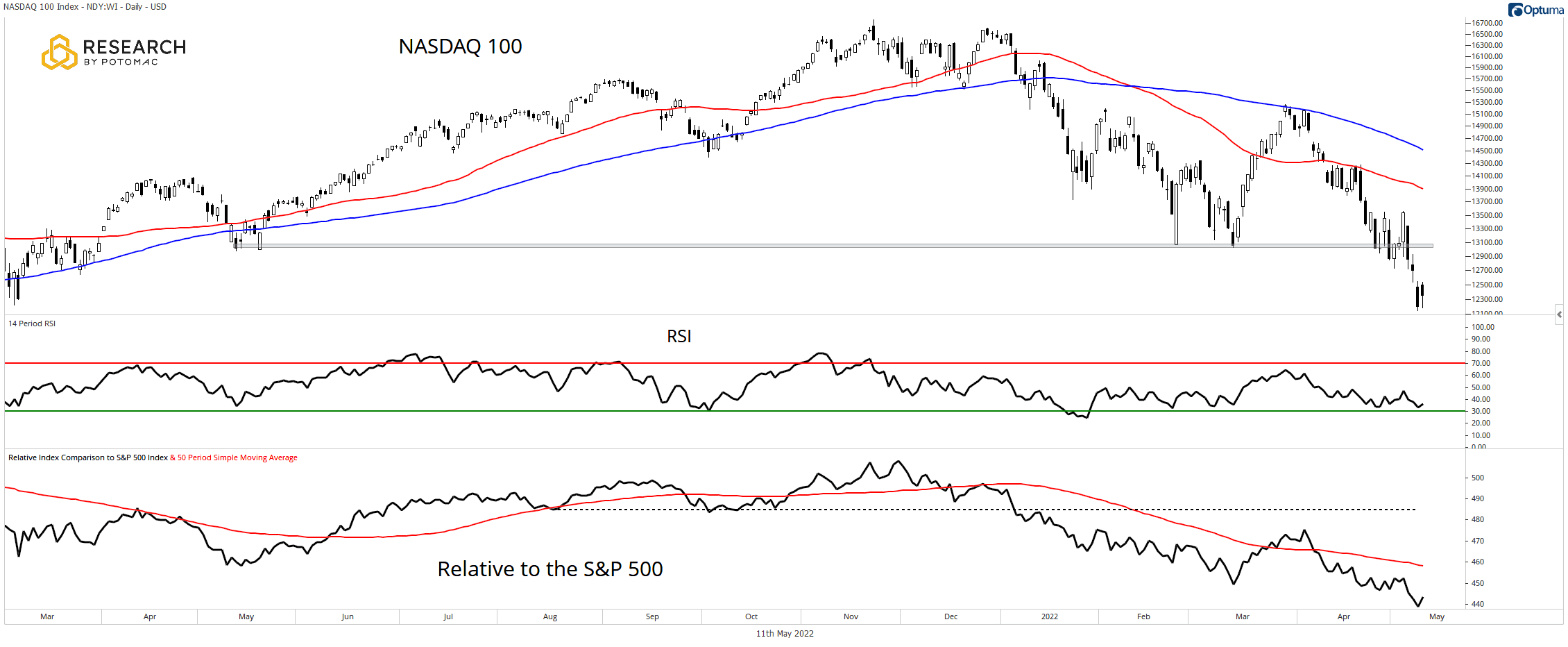
The 10-Year Treasury Note remains in a bearish trend but has found some support at the 2018 lows. This test of support coincides with the 14-day RSI failing to become oversold, a dynamic that opens the door to a relief rally in the near term. While such a rally would be a welcome reprieve for balanced investors, there is not enough evidence to support the view that the trend is shifting in favor of the bulls. It is more likely that the moving averages will be given time to “catch down” to price.
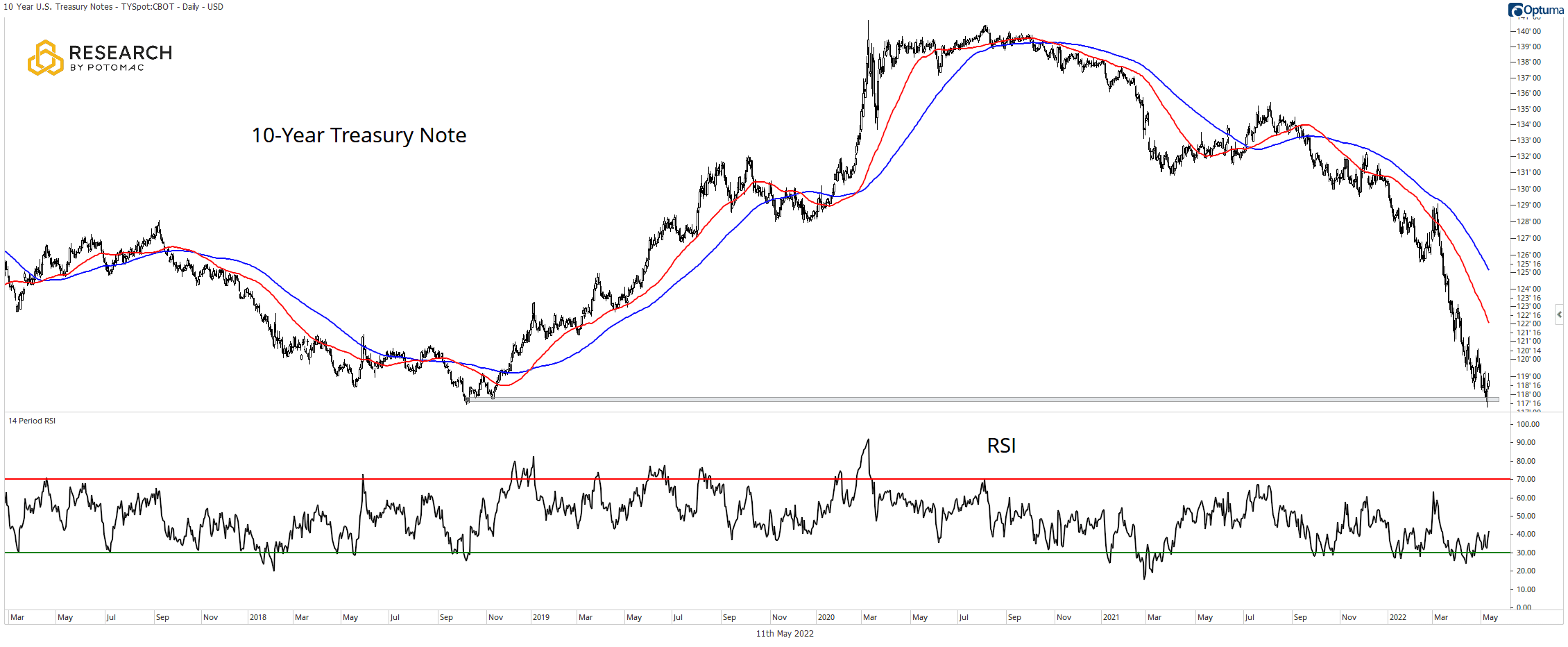
The Bloomberg Commodity Index continues to stall below resistance in the 130-140 zone and has cut below the 50-day moving average. The index is holding above important support near 120 and the rising 100-day moving average. The view that this is a pause within an uptrend remains in place, but a move below 120 would be a signal to manage risk in the space.
Finally, Commodities continue to outperform equities as the ratio trades above the 50-day moving average and the recent high.
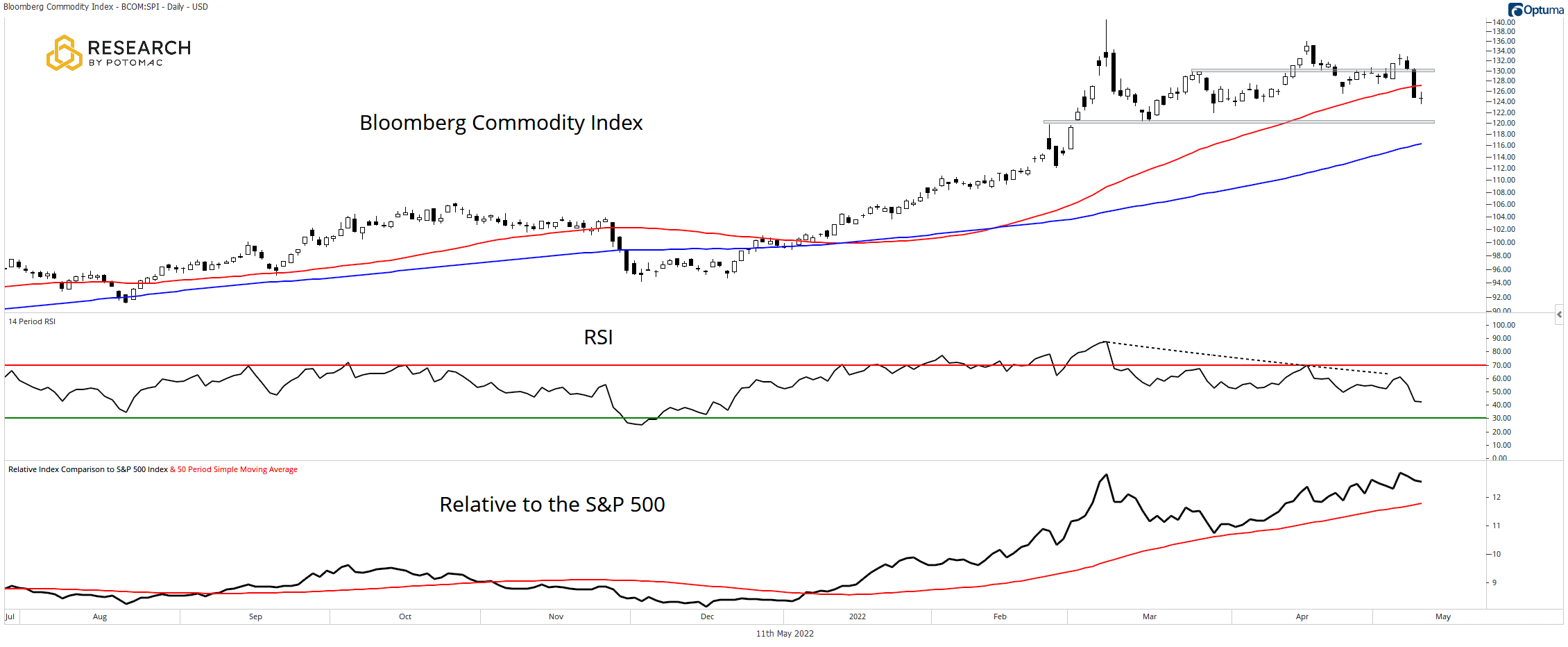
Sentiment Check
The CBOE S&P 500 Volatility Index (VIX) has moved back above the 30 level and the 10-day moving average. The trend remains to the upside, but we note that VIX still has not made a higher high relative to the March peak, even as stocks have undercut their March lows. This sets the stage for a contrarian move to the upside in equities, a move that will likely be countertrend in nature.
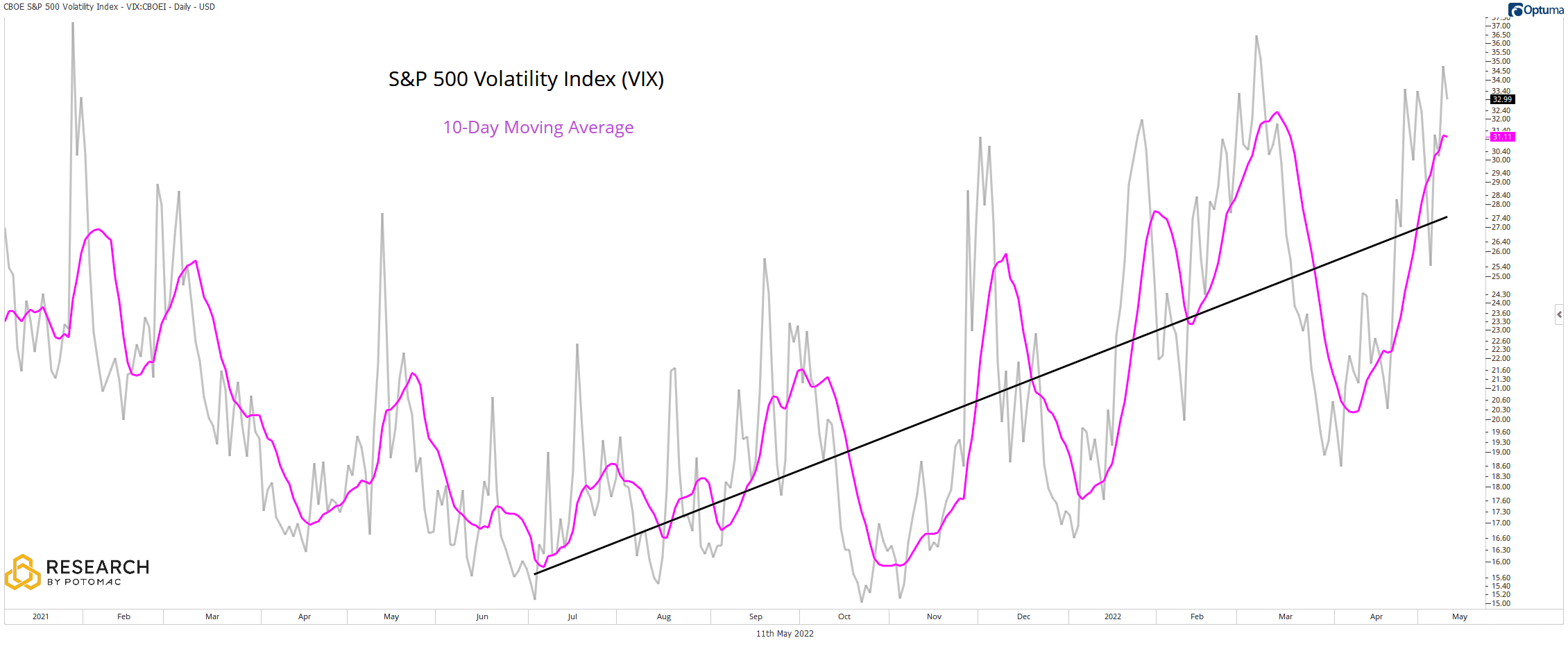
Adding to the sentiment case for a potential bounce in the near term, the CNN Fear and Greed Index sits at 23. This is down from a reading of 38 last week and puts the index in a position of Extreme Fear.

Source: CNN.com
Take-Aways:
With stocks under pressure, sentiment has reached levels of excess fear. This, combined with the fact that the RSIs for major averages have not become “oversold,” sets the stage for a possible countertrend rally in the near term. At the same time, the 10-Year Note has found support at the 2018 lows, opening the door to a move higher in price (lower yields), but more work needs to be done. Finally, commodities remain in a stalling pattern, with 120 as the key level on the Bloomberg Commodity Index for the bulls to defend.
Disclosure: This information is prepared for general information only and should not be considered as individual investment advice nor as a solicitation to buy or offer to sell any securities. This material does not constitute any representation as to the suitability or appropriateness of any investment advisory program or security. Please visit our FULL DISCLOSURE page.
